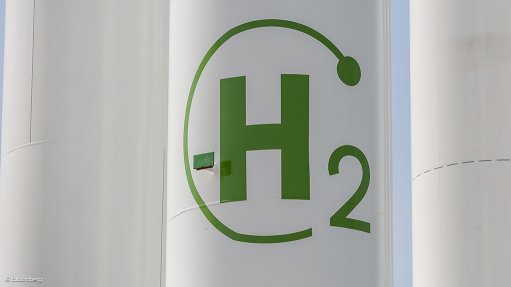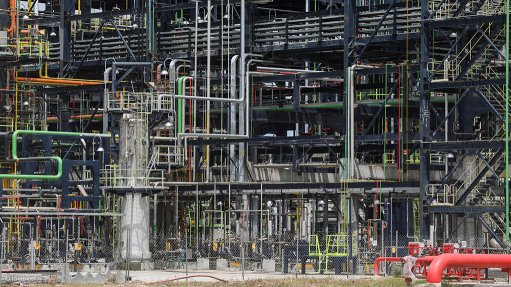High-technology sport becomes virtual
The 65-year-old high-technology Formula One motorsport is increasingly using digital and virtual systems to gain small, but crucial, advantages against competitors, says Red Bull Racing CIO Matt Cadieux.
Formula One is the pinnacle of motorsports, he enthuses, and cars can typically reach speeds of 300 km/h from rest within 8.6 seconds, have a mandatory maximum engine speed of 18 000 rpm, are built from 100 000 individual components, have more than 100 sensors and can reach 200 km/h and then decelerate until stationary within about 4.5 seconds.
The force generated during acceleration is often 1.45 times that of Earth’s gravity, while deceleration can produce forces of four times that of gravity, while the drivers will experience up to six times the force of gravity in going through certain corners.
IBM Storage GM Ed Walsh notes that mere hundredths of a second separate the cars competing for the grand prizes.
Red Bull Racing is using IBM Spectrum systems to capture, store and manage the data and schedule its engineering workflows to produce cars that can compete.
“We are up against teams that are decades old, can draw on well established talent pools and are very well funded.” The extreme nature of the cars and the competition make it a gruelling technology-driven engineering challenge, with Red Bull Racing (and most other teams) using complex engineering tools such as computational fluid dynamics and finite element analysis to assess and improve the performance of the car, adds Cadieux.
The Red Bull Racing team, which first competed in Formula One in 2005, comprises 700 people of whom 250 are engineers, he highlights. It manufactures many of the components used in the Formula One car in-house.
Red Bull Racing has won four Constructors’ Championships and four Drivers’ Championships.
The car is wholly designed and reassembled to meet the specific requirements of the race track for each of the season’s 21 races, with an average of 30 000 engineering changes made for each race.
“The car is an evolving prototype and if we do not make all the necessary changes or make ineffective changes over the course of one or two races, we lose ground in the Constructors’ Championship.”
Further, there is limited opportunity to test completed cars on the 21 race tracks of a racing season and, therefore, the team relies on virtual testing of the car to validate engineering changes.
“We use simulations to test ideas and validate proposed engineering changes to the car and determine the design of the car for a specific race. The simulation also serves as a final chance to see whether our predictions are correct. The track testing then serves as a final chance to see whether the simulations and predicted improvements work as expected.”
The team captures and analyses data in near real-time at the track, but also sends this information back to its headquarters in the UK where it is processed by the team’s supercomputers.
The complexity of the engineering processes and the speed at which these technical decisions must be validated and made is a significant challenge, with, on average, more than 200 steps in the team’s technical workflow processes.
Removing human error is necessary to ensure that effort is not spent in monitoring workflow processes, but rather on the engineering work that must take place. The Red Bull Racing Formula One team uses automated workflow management systems to ensure the processes are adhered to, leading to the best engineering outcomes, he notes.
“We rely on the virtual world and there is immense pressure for us to design and contribute changes that make a difference on the day. This makes our information technology systems critical and we require robust and capable systems for simulation and data analysis to enable data-driven decisions before and during the race.
“For example, improving our simulation throughput, by using new technologies and systems, therefore, directly translates to being able to make a faster car,” he concludes.
Schalk Burger is a guest of IBM at the IBM Edge 2016 conference taking place in Las Vegas, Nevada, in the US.
Comments
Press Office
Announcements
What's On
Subscribe to improve your user experience...
Option 1 (equivalent of R125 a month):
Receive a weekly copy of Creamer Media's Engineering News & Mining Weekly magazine
(print copy for those in South Africa and e-magazine for those outside of South Africa)
Receive daily email newsletters
Access to full search results
Access archive of magazine back copies
Access to Projects in Progress
Access to ONE Research Report of your choice in PDF format
Option 2 (equivalent of R375 a month):
All benefits from Option 1
PLUS
Access to Creamer Media's Research Channel Africa for ALL Research Reports, in PDF format, on various industrial and mining sectors
including Electricity; Water; Energy Transition; Hydrogen; Roads, Rail and Ports; Coal; Gold; Platinum; Battery Metals; etc.
Already a subscriber?
Forgotten your password?
Receive weekly copy of Creamer Media's Engineering News & Mining Weekly magazine (print copy for those in South Africa and e-magazine for those outside of South Africa)
➕
Recieve daily email newsletters
➕
Access to full search results
➕
Access archive of magazine back copies
➕
Access to Projects in Progress
➕
Access to ONE Research Report of your choice in PDF format
RESEARCH CHANNEL AFRICA
R4500 (equivalent of R375 a month)
SUBSCRIBEAll benefits from Option 1
➕
Access to Creamer Media's Research Channel Africa for ALL Research Reports on various industrial and mining sectors, in PDF format, including on:
Electricity
➕
Water
➕
Energy Transition
➕
Hydrogen
➕
Roads, Rail and Ports
➕
Coal
➕
Gold
➕
Platinum
➕
Battery Metals
➕
etc.
Receive all benefits from Option 1 or Option 2 delivered to numerous people at your company
➕
Multiple User names and Passwords for simultaneous log-ins
➕
Intranet integration access to all in your organisation


















